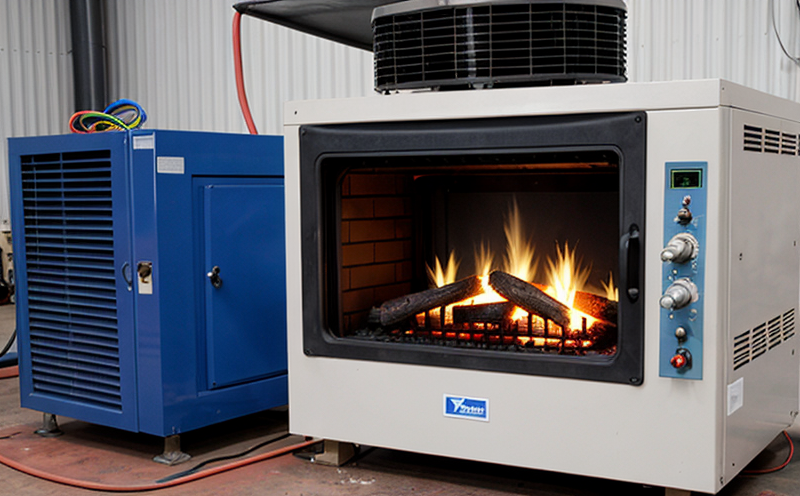Thermal Testing
The process of thermal testing is essential in ensuring that lighting products meet stringent quality and safety standards. This method evaluates a product's performance under various temperature conditions, helping manufacturers understand how their designs will behave in real-world environments.
In the context of lighting technology, thermal testing can be particularly crucial as it directly impacts the efficiency, longevity, and reliability of lamps and luminaires. Lighting systems are exposed to diverse environmental conditions, from hot desert climates to cold polar regions, which necessitates thorough thermal analysis. This ensures that lighting products not only perform optimally but also maintain safety standards across different geographical locations.
Thermal testing encompasses a range of procedures designed to simulate real-world operating conditions. These include static and dynamic temperature cycling tests, where the product is subjected to alternating high and low temperatures. Additionally, simulating extreme ambient temperatures during manufacturing or installation phases helps identify any potential issues before they become critical faults in the field.
The primary goal of thermal testing is to ensure that lighting products can withstand both short-term spikes in temperature as well as long-term exposure to varying climatic conditions without compromising performance or safety. By conducting these tests, manufacturers can optimize product design for better energy efficiency and durability.
- Static Temperature Cycling: This involves exposing the lighting fixture to constant temperatures above or below its operational range to simulate prolonged storage in hot or cold environments.
- Dynamic Temperature Cycling: Simulates real-world usage by cycling through different temperature ranges repeatedly over time, mimicking daily fluctuations experienced during operation.
- Thermal Shock Testing: Exposes fixtures to rapid changes between high and low temperatures to assess their resilience against sudden environmental shifts.
The success of thermal testing depends on precise control over test parameters such as temperature range, duration, humidity levels, and cycling rates. Advanced laboratories use sophisticated equipment capable of maintaining accurate temperature profiles within tight tolerances, ensuring reliable results that reflect true product behavior under specified conditions.
For instance, some high-intensity discharge (HID) lamps may experience reduced lifespan due to overheating if not properly designed for varying ambient temperatures. Through rigorous thermal testing, manufacturers can identify these vulnerabilities early in the development process and implement necessary improvements before finalizing production designs.
Applied Standards
Thermal testing follows internationally recognized standards to ensure consistency and accuracy across different laboratories worldwide. Some key standards include:
- ISO 8062-1:2003: This standard specifies the methods for determining heat resistance of materials used in lighting fixtures.
- IEC 60950-1:2017: Covers general requirements for the safety of information technology equipment, including testing procedures to ensure proper thermal management.
- EN 62034:2018: Provides guidelines on how to perform thermal stress tests on LED luminaires specifically designed for indoor use.
- ASTM F1985-21a: Offers protocols for accelerated life testing of solid-state lighting devices, focusing heavily on thermal aspects.
These standards provide a framework within which laboratories operate, ensuring that all tests are conducted uniformly and consistently. Compliance with these guidelines enhances confidence in the results obtained from thermal testing, making them valuable tools for regulatory compliance and quality assurance purposes.
Why Choose This Test
Selecting appropriate thermal testing is crucial for several reasons:
- Enhanced Reliability: By subjecting lighting products to realistic temperature conditions, manufacturers can uncover any weaknesses in design that could lead to premature failure.
- Improved Efficiency: Understanding how components behave under varying temperatures allows engineers to refine designs for better energy efficiency and reduced heat generation.
- Prolonged Lifespan: Proper thermal management extends the useful life of lighting systems, reducing maintenance costs and environmental impact.
- Regulatory Compliance: Meeting industry-specific regulations mandates adherence to specific thermal testing protocols. This ensures products meet legal requirements without risking non-compliance penalties.
- Customer Satisfaction: Demonstrating robust performance under diverse conditions builds trust with end-users, enhancing brand reputation and customer loyalty.
- Innovation: Continuous improvement through comprehensive testing fosters innovation by identifying opportunities for enhanced product features or improvements in existing offerings.
Implementing thermal testing early in the design cycle provides significant advantages over addressing issues after manufacturing has commenced. It reduces development time, minimizes resource expenditures, and streamlines compliance efforts while fostering a culture of continuous improvement among teams involved in R&D activities.
Customer Impact and Satisfaction
Customers benefit greatly from robust thermal testing practices implemented by reputable laboratories. Here are some key impacts:
- Promotes Safety: Ensuring that lighting fixtures operate safely within specified temperature limits prevents accidents caused by overheating or electrical failures.
- Elevates Brand Reputation: Demonstrated commitment to quality assurance enhances brand perception among consumers who value reliability and safety above all else.
- Encourages Repeat Business: Satisfied customers are more likely to return for future purchases, referring others to your company based on positive experiences with tested products.
- Fosters Long-term Relationships: Building trust through transparent communication about testing processes and results encourages ongoing partnerships between suppliers and clients alike.
- Supports Sustainable Practices: Products that perform well under varied thermal conditions contribute to sustainable practices by requiring less frequent replacements and generating lower waste streams over their lifetimes.
- Aids in Competitive Advantage: Superior testing capabilities differentiate your organization from competitors, positioning you as a leader in innovation and quality within the industry.
By prioritizing thermal testing early on, manufacturers can create lighting products that not only meet current standards but also anticipate future challenges related to climate change and evolving consumer expectations regarding eco-friendly solutions. This proactive approach sets your company apart from others while contributing positively towards global sustainability goals.





